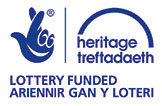




Search the site
Email: info@breconremembers.co.uk
Brecon Remembers © 2018. All rights reserved. Cookies & Privacy Policy | Terms of Use View Web Design

CONTACT US

LINKS

YouTube
SOCIAL
SUPPORTED BY





WORLD WAR ONE
The Men Who Died


WORLD WAR ONE




BRECON A BRIEF HISTORY
(An edited extract courtesy of Brecon Town Council, with
acknowledgement to Sister Bonaventure Kelleher)
The lovely old market town of Brecon nestles in the shadow of the majestic Beacons at the confluence of the Rivers Usk and Honddu, the latter providing the town's Welsh name, ABERHONDDU.
The prelude to the history of the town itself can be of interest to visitors, because this area of Breconshire is generally regarded as one of the most historic locations of settlements in Wales. For example, on the perimeter of the present town, at Slwch Tump and Pen-
The name of our town, Brecon, is traced by scholars from legendary fifth century Brychan through Latinised spelling such as Breconia to Anglo-
Situated in the March borderland between Wales and England, Brecon is steeped in history. The town was granted its borough charter in 1276 by Humphrey de Bohun, Earl of Hereford and Essex, Constable of England and Lord of Brecknock. In 1411, the Borough of Brecknock received a Charter from King Henry IV, who was already Lord of
Brecknock through his marriage to Mary de Bohun.
11 12
By the middle of the 16th century, Brecon had become one of the most important towns in Wales because of its position on the main route across Southern Wales from London to the coast. It was named in the Act of Union in 1536 as one of four local capitals for Wales. Later, in 1542, Henry VIII set up a Chancery here and installed an Exchequer in the Castle.
Brecon's first Royal Charter was granted by Philip and Mary in 1556, and is seen as important and influential for many years in the political and commercial life of the borough. Reminders of the developments during Tudor, Elizabethan and subsequent periods can be seen in Buckingham House and Havard House (1556) in Glamorgan Street, at Newtown (1582), and in the date 1589 above a shop in the Bulwark. The Guildhall site (1624, noted below) signified the movement of
power away from the Castle to the Town.